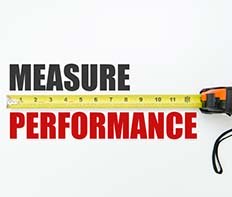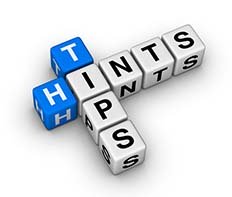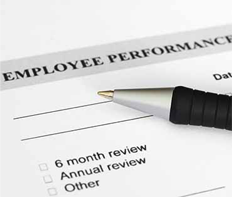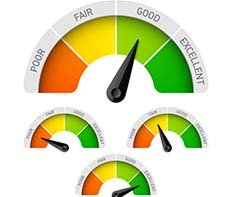Introduction to Performance Appraisal Tips
Discover over 45 of the most important performance appraisal tips and techniques that will ensure you get the most out of your appraisal process.
A leader with a high people value will find time to complete their employee appraisals as soon as they fall due and will approach the appraisal process as one important piece of the overall performance management process.
Tips for Rating Method
- Learn about all five common rating methods before you select the one that suites your needs
- The best rating method to use is Behaviour Anchored Raring Scale it is also the most time consuming and expensive to develop. When selecting a rating method you will need to consider the resources available to develop the system
- Don’t feel that you need to stick to one rating method, where necessary use a combination of rating methods in your appraisal process
Tips for Establishing Performance Standards
- When establishing performance standards you need to consider
- Don’t set too much of a stretch, if your people do not believe that they will meet the target they will not be motivated by the target
- Don’t be too soft, no one is motivated by soft targets
- It can be beneficial to set a performance standard and then a stretch target, the stretch can be negotiated one on one with your staff or can be consistent for all employees.
- Use a line like “The minimum expectation is 30 widgets per hour, how far above the minimum would you like your performance to be?”
- Be willing to change the performance standards when they prove to be too much of a stretch or too soft
- Agree upfront with your people that the performance standards will be reviewed quarterly
- If there is a link between pay and the performance standards your people are more likely to want to negotiate for soft targets
- If there is no direct correlation between pay and performance it is likely that your people will be more willing to set a stretch target
- Where possible avoid using the word target for your performance standards, instead use the word minimum i.e. instead of “the target is 15 widgets per hour” use “the minimum expectation is 15 widgets per hour”
- Always lean towards setting tangible performance standards where possible
- Performance standards need to be about the individual not a team, it is ok to have team targets, however individual performance must be rated on the individuals contribution to the team
- A good way to check your performance standards for reasonableness is to compare the current team average with your new performance standard
- If there is a lot of variation between your top few and your bottom few performers then you should consider setting a performance standard above the current team average. (A lot of variation implies opportunity for improvement)
- If there is not a lot of variation, then you can set the performance standard at the current team average. You can always review it in 3 month time.
To find out more about setting performance standards, click here
Tips for Measuring Results
- You need to have a reliable source of data for your tangible measures. If there is any doubt about the accuracy of your data your employees will not accept the result
- The measurement needs to clearly identify the individuals performance
- You need to provide your employees with the data frequently, so that they can correct their performance in time to achieve their desired rating
- Measuring intangible goals is best done throughout the year in your employee’s one on ones and summarised in your annual performance interview
- Be consistent with your ratings. Make sure all people at the same level of performance get the same rating. It can be helpful to sort employees into groups of equal performance.
To learn more about measuring results and rating performance, click here
Tips for Rating Errors
Leaders should understand their natural biases and put in place mechanisms to ensure these biases don’t impact their performance ratings.
- You need to be aware of the common rating errors that may impact how you rate your people
- Spend time reflecting on all aspects of your employee’s performance, rather than making quick decisions
- Where possible, discuss your rating with someone in human resources or your with your manager for reasonableness
To find out more about our natural biases and how you can be aware of them, click here
Tips for Preparing for your appraisal interview
- Send out invitations to your staff 2 full weeks in advance, with clarity of what the meeting is for and what is expected from your employees before and during the performance appraisal interview
- Send out invitations to all of your staff at the same time, if you spread sending your invitations out, let your staff know that you are spreading out your invitations, and when they should expect to receive their invitation
- Complete your performance appraisals as soon as they fall due, delays tell your people that you do not consider their appraisal to be important and you don’t value your people
- Review the feedback that you have provided during the year, you need to ensure your employees performance rating is consistent with the feedback that you have provided during the year
- Familiarise yourself with your employees results and the drivers of those results
- Make sure you book the meeting room that you intend to use
Getting your performance appraisal interview right has never been easier, click here to find out how
Note: For employee’s who are under performance management you should discuss the situation with your Human resource adviser before your appraisal interview. Instead of completing an appraisal you may just continue the performance conversations.
The appraisal interview
- Your three approach options
- Tell the employee your rating and sell your reasons to them
- Tell the employee your rating and discuss the ratings
- Discuss each rating collaboratively and agreeing on final rating
- Be prepared to listen to reason from your employees and change a rating if they provide new information of merit, though be firm and don’t accept excuses that are within the employees control
- Never make an excuse for your employee’s performance or try to justify their under performance
- Have your discussions in a quite place where you are not going to be interrupted
- Turn off your mobile phone and ensure your employee does the same
- Ensure no one can over hear your discussion
- Start your discussion with “the content of this meeting is confidential, that is between you and I, there is an expectation that neither one of us discloses what goes on in this meeting to anyone” (NB: other than through the approved grievance processes)
- Let your employee do 60% of the talking, you do 60% of the listening
- Stay calm, do not raise your voice at your employees
- Some employees will seek to distract the meeting by bringing up old issues. Your role is to keep the meeting focused on your agenda, not theirs. Keep bringing the discussion back to the performance that you are discussing
- Never use personal criticism
- Stick to tangible facts
For your free appraisal interview how to guide, click here
After the appraisal interview
- Give your employees a copy of their final performance appraisal
- Ensure you follow up on all agreed actions. (Maybe transfer them to your one on one form for each employee and track them from there)
- Complete an employee touch point within a couple of hours of completing your appraisal. This is especially important if the employee received negative feedback
- Reflect on how well you handled the performance interview and if required seek coaching from your Human Resource adviser, there is always room to improve
To discover how to give credibility to your performance appraisal process, click here
Leadership Tips for your Performance Appraisal Process
- Discuss the appraisal process with your people in two consecutive team meetings before you send out your appraisal interview invitations
- Informally check that your people know what is expected from them, by asking them and make sure they feel prepared
- Outline your performance appraisal process and then ask your people if there is anything they would like to see done differently
- After you have completed your appraisals complete a post implementation review, to find out what you can do better next time
The last of our performance appraisal tips and techniques
Managing individual performance is simplified by having good processes in place. Your performance appraisal process will be simplified by completing regular meaningful one on one’s through out the year. In these one on one’s you provide the employee with their current performance rating using the same criteria as you will use in their end of year review. Click here for diagram of this in action
Now that you have read this list of performance appraisal tips and techniques, why not review our examples or download our free templates.
Return form performance appraisal tips and techniques to our Performance Appraisal home page







